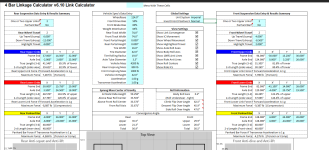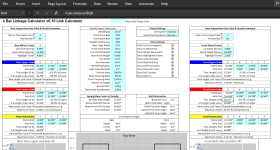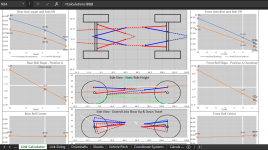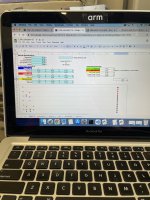Thanks for the input. I didn’t know the triangulation on the lowers gives more “axle steering” aka swinging in its arc of travel? Changing the track bar to a higher location on the axle probably flattens the roll axis and helps give less swing correct?
I fixed my COG. I used the top of the bellhousing bolt. I have an aluminum block so I think the recommendation is camshaft centerline but since I’m heavy and have creature comforts I went to the top bellhousing bolt.
How is my anti lift up front? Is a lower anti lift number allowing the suspension to droop out on climbs and forward momentum or does it suck it down?



I fixed my COG. I used the top of the bellhousing bolt. I have an aluminum block so I think the recommendation is camshaft centerline but since I’m heavy and have creature comforts I went to the top bellhousing bolt.
How is my anti lift up front? Is a lower anti lift number allowing the suspension to droop out on climbs and forward momentum or does it suck it down?







